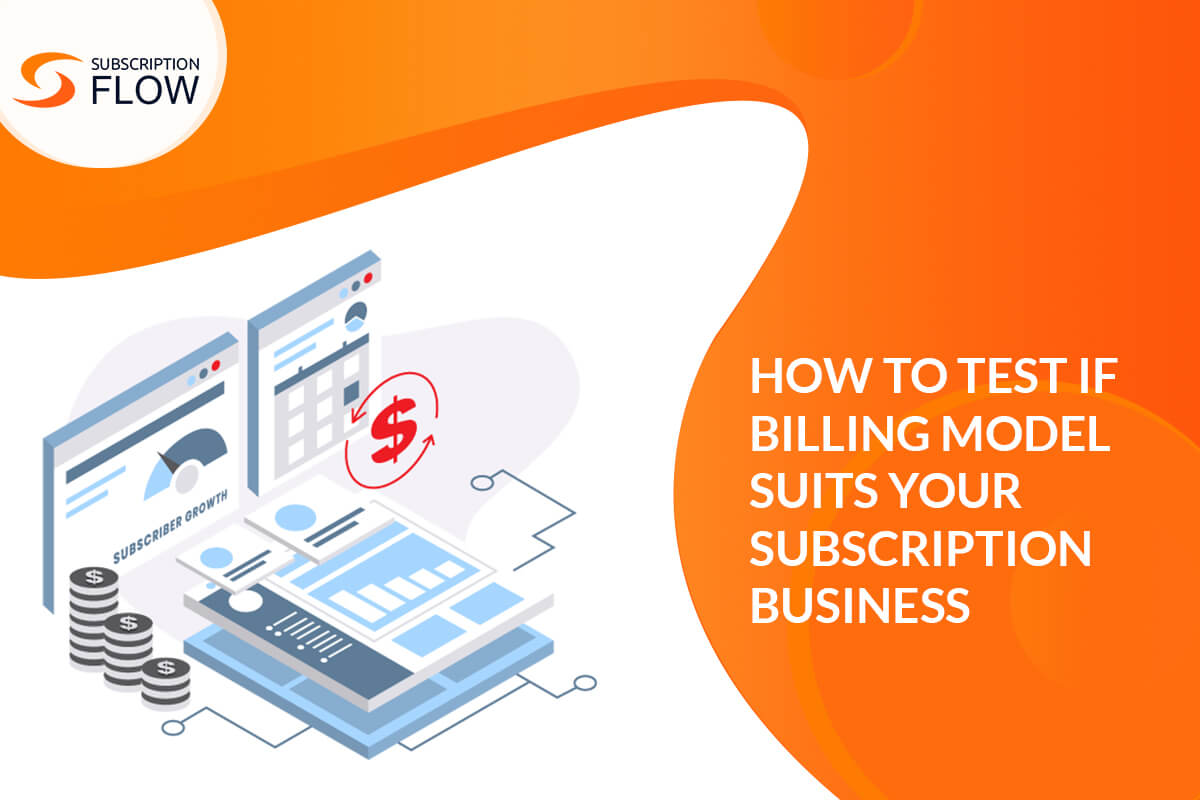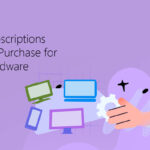
A Definitive Guide: Top SaaS Billing Models for SaaS Businesses
One of the numerous challenges for implementing billing models in SaaS or Software as a Service product is to maintain a balance between revenue and value. It is crucial for a business entity to compensate their customers such that the strategy for their SaaS billing models aligns well according to the customer needs. For this, identifying the appropriate and required subscription billing model is an important attribute when it comes to attaining a heavy clientele base.
Along with balancing revenue and value, ensuring scalability too is a critical challenge for SaaS companies offering products. These products need to be able to meet growing demands without compromising on usability or performance as their popularity and usage increase. Technical scalability, which includes handling larger data and user volumes, and company scalability, which includes implementing procedures and allocating resources to effectively support growth, are both included in the concept of scalability. If scalability issues are not resolved, there may be system malfunctions, performance snags, and eventually unhappy customers. This is why for longevity in the SaaS sector, scalable architecture implementation and ongoing system optimization are therefore essential.
There exist a range of factors that individually contribute to the success of a SaaS business. For instance, customer satisfaction and optimized customer experience help in customer acquisition, brand reputation, and higher conversion rates. Not only this, but they also help ensure a strong relationship with customers which ultimately leads to increasing business value. Any discrepancy in identifying success elements can lead to a frustrating user journey and brand reputational damage.
A successful SaaS product is the one which provides services to customers according to their interest. Along with other parameters, selecting an appropriate SaaS billing model is pivotal for a SaaS product. Keeping all that in mind, in this blog we will look at a number of popular SaaS billing models—each has pros and cons of its own. We will go into the specifics of each model, from the simple Per-User Billing that bases charges on the quantity of users using the service to the adaptable billing Pay-As-You-Go that ties costs to actual usage.
In addition, variations that accommodate different customer needs and preferences, such as the Per-Active User Billing as well as the Freemium Model, offer creative approaches to pricing. We will also look at Per Feature Billing and Tiered User Billing, which offer features that can be customized and scaled, respectively. Finally, we will examine the so-called Hybrid Billing model, which is a flexible combination of various subscription models designed to satisfy particular client needs.
A List of the Best SaaS Billing Models
-
Per-User Billing
This is one of the most popular SaaS billing strategies in which the users pay bill based on the number of individuals that are using the software/service. For example, plan A allows three users to avail services at the same time, the bill would be less for that as compared to the plan B in which more 6 users can access the software.
The per-user pricing model is direct, simple, and easy to manage model. It helps users to calculate their monthly costs easily and also helps the simplifying the overall sales process. It also helps your SaaS business, because as you get the request to allow access for double users, you would ultimately get a double revenue in return. So this model is predictable with respect to the recurring revenue model.
-
Per-Active User Billing
It is a variant of the per-user pricing strategy. However, in this model, a user would have to pay the bill for active users. This means if the user is not using any service, then he/she will not pay for that and the money won’t get wasted. This model helps the users to buy a plan which gives access to the users and they will not pay the bill for the services which are not availed after subscription. The model will cost only the users who were active.
-
Pay As You Go Billing
This model charges the users based on the usage of service. It advantages the SaaS startups as they do not need to pay huge money for the whole product if they are using some of the features. This model is flexible and its important advantage is that this model does not waste resources on the services. The model is best for customers who use services occasionally or sporadically.
-
Freemium Model
This is a free-based model in which the SaaS businesses can provide a free access to their basic product to their customers. The reason why this is counted as being one of the best SaaS billing system is that by ensuring enhanced customer experience and enrich interface, the users would like to upgrade the service which is not free of cost. However, they can utilize the basic service to an extent they want to. Some SaaS businesses put a limit on using free basic service of some days or weeks and monitor the subscriptions to upgraded and basic services plans.
-
Tiered User Billing
This SaaS billing model is similar to the pay per user model, but it charges the users according to the tiered structure. This model increases the price as the number of users increases. Similarly, the permitted users increase in bands in the tiered pricing strategy. For example, there exists one pricing model for the package of 5 users and another package for up to 10 users. This model helps SaaS businesses tailor the service as per the needs of their customers. Also when the users outgrow from the package they were currently using, there is a direct way that can lead them to the next upgraded plan.
-
Per Feature Billing
In this billing model, the focused parameter is the ‘features’ which is associated with the provided service. This model separates the price according to the features available in the chosen service. The packages that have high prices would have a greater number of features in it. The per-feature billing strategy offers an obvious upgrading motivation to the customers as it unlocked various other functionalities to the users. The model also compensates for the features which are heavy. For instance, there might exist some features that employ a greater number of resources. To compensate them, top-tiered packages are offered which incorporate the upgraded functionalities.
-
Hybrid Billing
A hybrid SaaS billing model is the one that provides a combination of two subscription billing models. The following are some of the conventional hybrid approaches used by businesses.
- Tiered Billing model + per user billing model
- Tiered Billing model + custom model
- Tiered Billing model + pay as you go, billing model
This is a flexible model that tailor the customer needs and present plans to them that best fit according to their requirements. SaaS businesses can design hybrid billing models to customers by identifying their user subscription behavior and activities related to obtaining services.
So, which of these billing models is the right fit for you?
Selecting the appropriate billing model is essential for companies looking to maximize revenue generation and improve customer retention. Per-user billing provides a clear and economical solution by matching expenses to real usage and making pricing structures easier for users to understand. However, by only charging for active users, per-active user billing gives companies more financial control over expenses while guaranteeing equitable billing procedures and effective resource allocation. The billing cycle that works as per the logic of pay-as-you-go provides cost management agility to companies looking for flexibility and scalability. It allows businesses to adjust to changing customer demand and scale operations effectively according to actual resource usage.
In the interim, the freemium model functions as a tactical instrument for attracting customers and revenue generation, enabling companies to draw in an extensive user base with an initial free offering and gradually transition users to premium features. By providing adjustable pricing plans with different feature sets, tier-based user billing offers flexibility and choice to customers, enabling them to choose the plan that best suits their requirements and budget. Per-feature billing, on the other hand, allows companies to charge for individual features, giving customers the flexibility to customize their membership plans to best suit their needs and get the most out of them.
The hybrid billing model, which combines various billing techniques to create customized pricing packages, provides the best flexibility and customization for businesses dealing with complex pricing scenarios. This method promotes billing transparency and predictability while boosting customer satisfaction and trust by accommodating an extensive variety of client tastes and usage patterns. The choice of the best billing model ultimately comes down to a number of variables, including target market, business objectives, and product offerings. Through a thorough assessment of these factors, companies can select the billing model(s) that supports long-term growth in the current competitive environment while also matching their goals.
The bottom line
For any SaaS business, a billing model is extremely important. The model can be adjusted according to market demand and economic changes in the patterns of digital space. With recurring pricing billing models, online businesses can liquidate the customer lifecycle to provide them an optimum customer experience. Not only this, choosing a suitable billing model can contribute to the high business revenue and brand fame.
As we have already mentioned, in the cutthroat world of SaaS, choosing the appropriate method for SaaS billing management is essential to optimizing revenue generation, improving customer satisfaction, and fostering long-term growth. Businesses can adjust their strategy to match their goals and clientele by comprehending these models. But the question at the end of this blog is: are you prepared to enhance your billing plan? If the answer to that is a resounding yes, then think about scheduling a demo with SubscriptionFlow right now to put your chosen billing model into practice! And because every business is different, it is critical for you to onboard with SubscriptionFlow’s team of experts to determine which model best fits your objectives and those of your clients.












